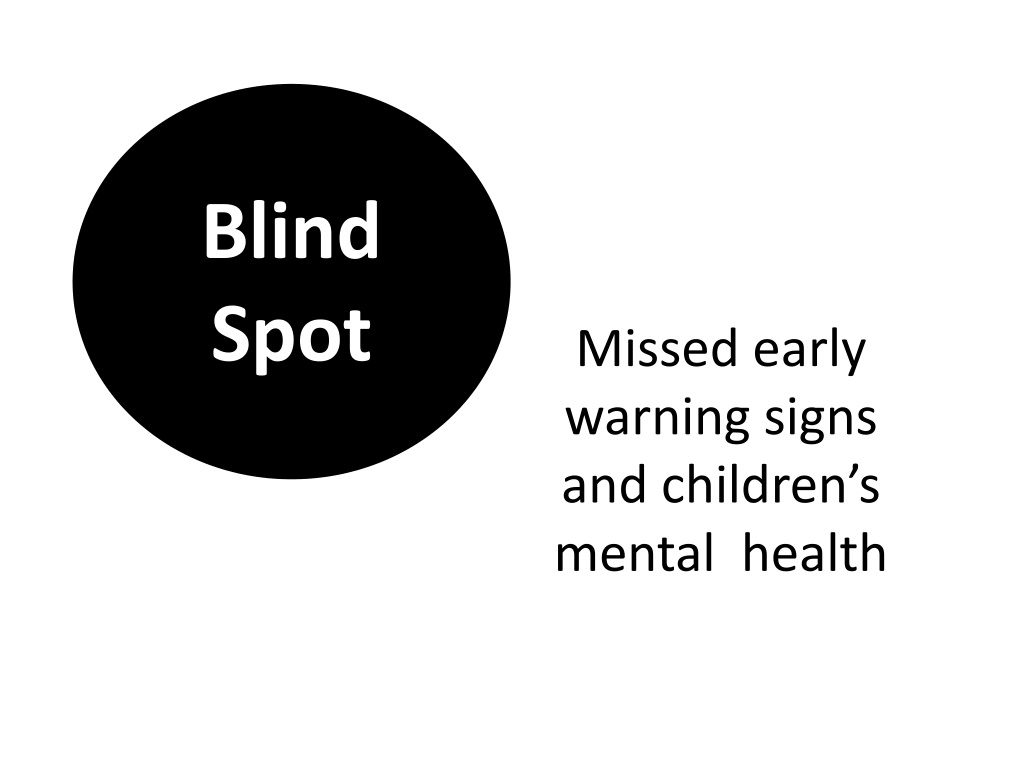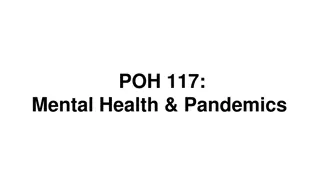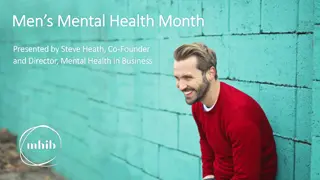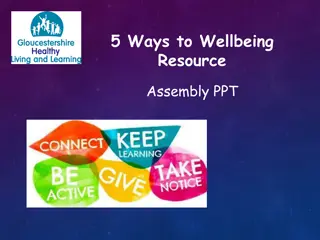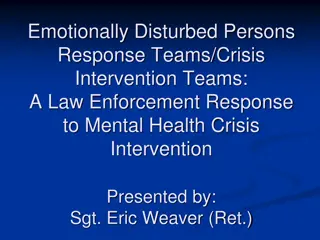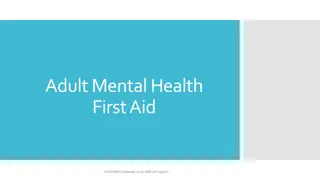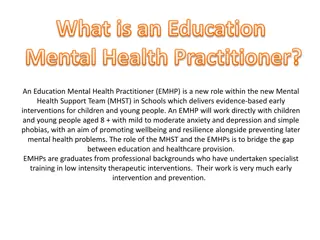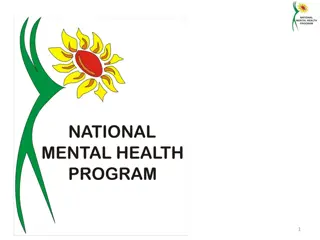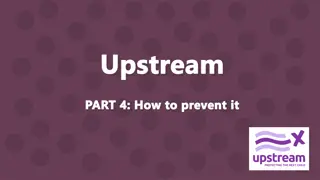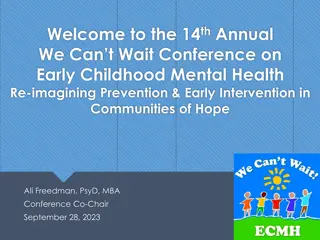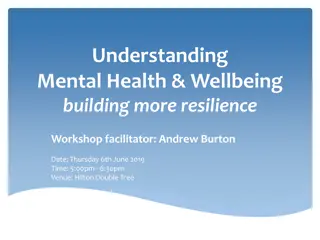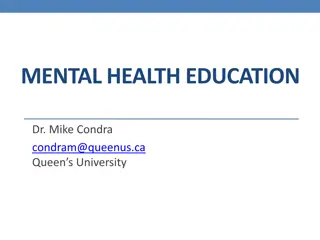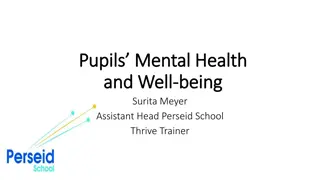Recognizing Early Signs for Children's Mental Health Awareness
Disturbing statistics reveal significant mental health challenges faced by children in Connecticut, with over half receiving no treatment. Academic struggles and behavioral issues often go unnoticed, leading to long-term impacts on educational progress. Troubling trends include high rates of expulsion from preschool and worse outcomes for children with emotional disorders. Case studies of Josue, Arianna, and Jaden highlight early warning signs and the complex interplay of mental health issues. Early detection of anxiety, depression, and behavioral problems is crucial for timely intervention and support.
Download Presentation

Please find below an Image/Link to download the presentation.
The content on the website is provided AS IS for your information and personal use only. It may not be sold, licensed, or shared on other websites without obtaining consent from the author. Download presentation by click this link. If you encounter any issues during the download, it is possible that the publisher has removed the file from their server.
E N D
Presentation Transcript
Blind Spot Missed early warning signs and children s mental health
Childrens mental health: Disturbing statistics In any given year, about one out of every five Connecticut children (87,500 to 125,000) struggles with a mental health condition or substance abuse problem. More than half receive no treatment.
Early difficulties: Long-term impact Interrelationship between mental health problems and poor academic outcomes is reflected in limited educational progress from school entry through secondary school years
Troubling trends Rates for expulsion from pre-school exceed those of children in Grades 1-12; Connecticut had one of the highest rates of expulsion from state-funded preschool, with more than 10 students expelled per 1000; Educational, social and behavioral outcomes worse for children with emotional disorders than for any other disability group
Josue (Age 15) Born to 12-year-old mother History of early ear infections, and speech problems Exposed to sexual abuse and domestic violence Age 13 bipolar disorder, ODD, ADHD, LD Suspension from school Involvement with juvenile justice system auditory
Arianna (Age 15) Age 4 febrile seizures Severe expressive language delays Visual processing problems Retained Grade 4, socially promoted Grades 3,4,5,6,7,8 Grade 6 difficulty with peers School suspensions for fighting
Jaden (Age 14) Sickle Cell trait Age 1 stopped talking Limited social reciprocity, echolalia, perseveration Age 7 rule out Fragile X Syndrome Grade 4 deficits expressive language Age 11 PDD, Intermittent Explosive Disorder Grade 9 Language, communication disorders, underlying thought disorder?
Early warnings Anxiety, depression, information processing problems and academic delays Phobia, Obsessive-Compulsive Disorder (OCD) Genetic disorder with elevated levels of anxiety, disruptive behavior, poor anger management Attentional issues, multiple suspensions for disruptive behavior, severe attendance problems, expulsion for possession of marijuana
Options for screening Behavioral and Emotional Screening System (BESS; ages 3-18) combines information from three sources: parents, teachers, youth (5-10 minutes administration time); Behavior Assessment System for Children (BASC-2; ages 3+) Ages and Stages Questionnaire-Social Emotional (ASQ-SE; Birth-3)
Recommendations Improve screening for mental health risk factors Improve referral for early intervention, communication and collaboration among service providers Improve community and parent education around mental health risk factors and services available to children and families Improve training for school staff, medical and other service providers to children and families
